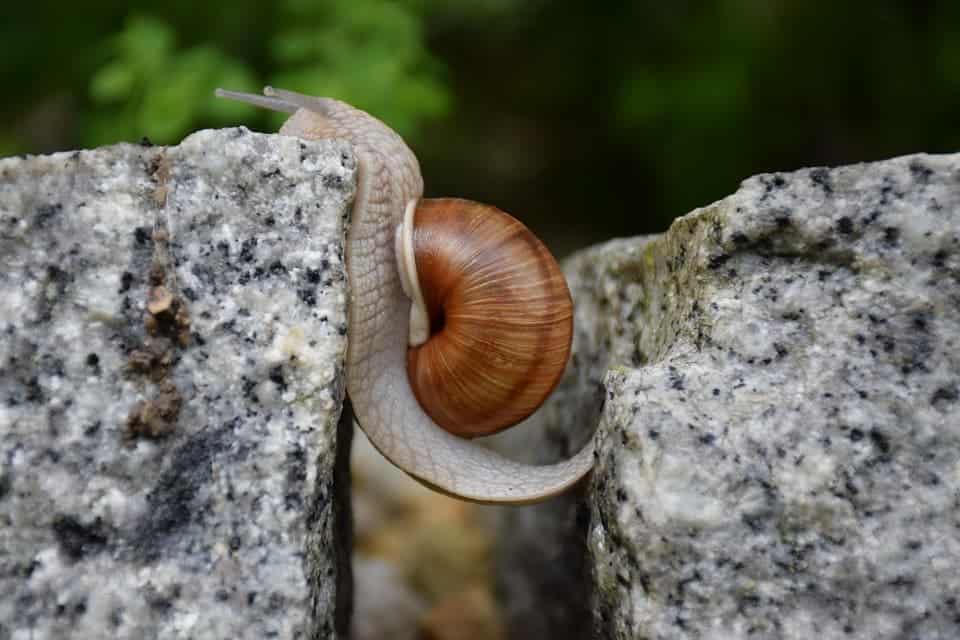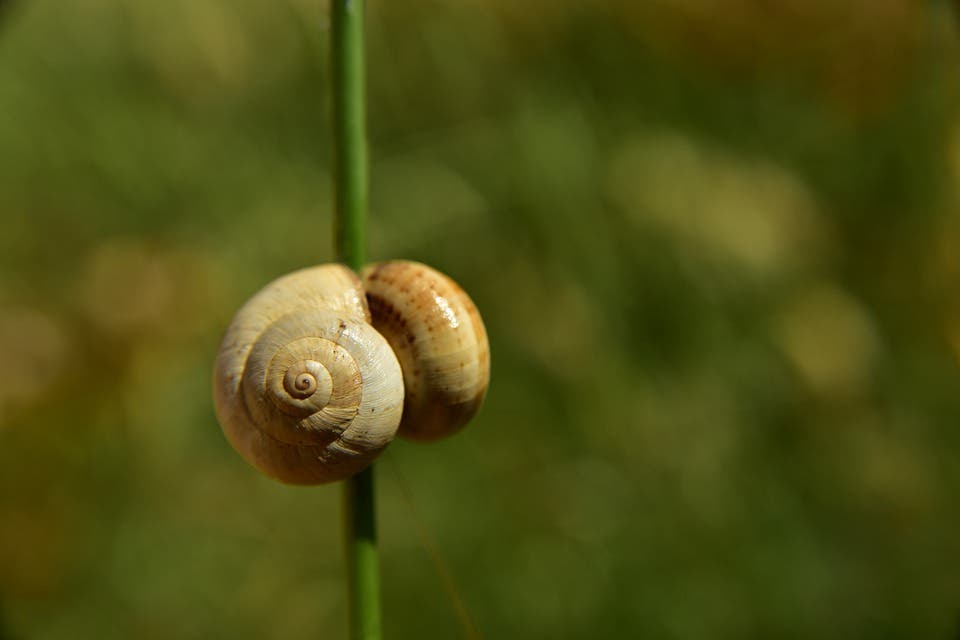An international team of snail-envious engineers has found a way to make powerful but reversive adhesives.

Nobody wants weak glue. It ruins your day. But another side of this sticky situation is reversibility. A strong glue can quickly become a liability when we stick something in the wrong position, for example. With a weak glue, you can un-stick something and try again — but risk it falling apart later when you need it to hold most. With a strong glue, you just have to deal with the mistake or start over from scratch — no adjustments allowed.
Except if you’re a snail. Snails, you see, have epiphragms — that slimy wet layer of mucus lathered all over their body. The epiphragm can harden to protect a snail’s body or to allow it to anchor in place for long periods of time. However, it can quickly be deactivated when the animal needs or wants too. The present study demonstrates a man-made alternative that functions much in the same way as a snail’s epiphragm.
Slime time
“Geckos can put one hand down and then release it, so the gecko’s adhesion is reversible, but it’s very low adhesion,” says Shu Yang, a Professor in the Department of Materials Science and Engineering and in the Department of Chemical and Biomolecular Engineering at the University of Pennsylvania, who led the study.
“A gecko is 50 grams, and a human is at least 50 kilograms. If you want to hold a human on a wall, it’s not possible using the same adhesive. You could use a vacuum, but you have to carry a cumbersome vacuum pump. We’ve been working on this for a long time, and so have other people. And no one could have a better solution to achieve superglue-like adhesion but also be reversible.”
Yang and her team have a background in adapting nature’s creations to human technology and know-how. Among others, they have worked on nanoscale structures inspired by the structure of giant clams, butterflies, and pollen. Yang herself is also the director of AESOP, the Center for Analyzing Evolved Structures as Optimized Products, which looks at biology to solve design and architecture problems.
The geckos‘ adhesive toes aren’t strong enough to adapt to human use, she explains, although her team focused a lot of effort on making it work. However, the team had a breakthrough when Gaoxiang Wu, a Penn Engineering graduate student and co-author of the current paper, worked with a hydrogel made of a polymer called polyhydroxyethylmethacrylate (PHEMA) and noticed its unusual adhesive properties. PHEMA is rubbery when wet but becomes rigid as it dries — just like an epiphragm.
When PHEMA is wet, it can squish thoroughly into a surface texture, be that visible or microscopic. This part of the process makes it ‘sticky’. But what makes it a good adhesive is that when PHEMA begins to dry, it becomes very rigid — about as rigid as a plastic bottle cap, the team reports — but doesn’t shrink at all. This last step is the real meat and potatoes of the whole ‘adhesive’ thing. As the material hardens inside the cavities, it becomes securely tied to it.
“[PHEMA] is like those childhood toys that you throw on the wall and they stick. That’s because they’re very soft. Imagine a plastic sheet on a wall; it comes off easily. But squishy things will conform to the cavities,” says Yang.
“When materials dry, they usually shrink. If it shrinks from the surface, it no longer wants to conform to the microcavities and it’ll pop out. Our PHEMA adhesive doesn’t pop out. It stays conformal. It remembers the shape even when it’s dry and rigid.”
PHEMA works much like a snail’s epiphragm. This biological material, initially wet as it covers the snail’s body, sticks to any surface the animal moves over and eventually hardens. Snails often use their epiphragm to anchor them in place when they retreat into their shell. The material hardens into a solid ‘barricade’ around the shell’s opening, keeping it in place and insulating the snail from the dry, warm air during the day.

Image credits Ulrike Leone.
At night, when temperatures drop and humidity rises, the epiphragm softens and the snail goes along its merry way.
The team tested both wet flexibility and dry adhesion for the PHEMA hydrogel in the lab, also evaluating its ability to hold weight and how long it needs to rehydrate and reverse its adhesive properties. The material was 89 times stronger than gecko adhesion but was easily broken after being rehydrated, the team reports. To showcase just what the material can pull off, the study’s co-first author Jason Christopher Jolly volunteered to suspend himself from a harness held only by a postage-stamp-sized patch of the PHEMA adhesive.
The glue held. The team says that although PHEMA may not be the strongest adhesive in existence, it is currently the strongest known candidate available for reversible adhesion.
“When it’s conformal and rigid, it’s like super glue. You can’t pull it off. But, magically, you can re-wet it, and it slips off effortlessly,” says Yang. “Additionally, PHEMA doesn’t lose its strong adhesion when scaled up. Usually, there’s a negative correlation between adhesion strength and size. Since PHEMA is not dependent on a fragile structure, it doesn’t have that problem.”
On the one hand, PHEMA could a huge development for scientific, industrial, and household applications. On the other hand, it’s also quite limited, since its activation is mediated by water. For example, a car glued together with PHEMA would, in other words, fall apart in the rain. So Yang acknowledges that it’s just a starting point.
“Car assembly uses adhesives, and, you can imagine, if there are any mistakes putting parts together, the adhesive is set and the parts are ruined,” she says. “A car is pretty big. Usually they don’t glue things together until the last step, and you need a room-sized oven to host the car and cure the adhesives. An adhesive that’s strong and reversible like PHEMA could completely change the process of car assembly and save money because mistakes wouldn’t be so costly.”
“[However], with a lot of things you don’t want to use water. Water takes time to diffuse. In the future, we want to find the right material that can switch the property like that.”
The researchers hope to eventually find or engineer adhesives that could respond to cues like pH, specific chemicals, light, heat, or electricity, to broaden the potential applications of reversible adhesion.
The paper “Intrinsically reversible superglues via shape adaptation inspired by snail epiphragm” has been published in the journals Proceedings of the National Academy of Sciences.


